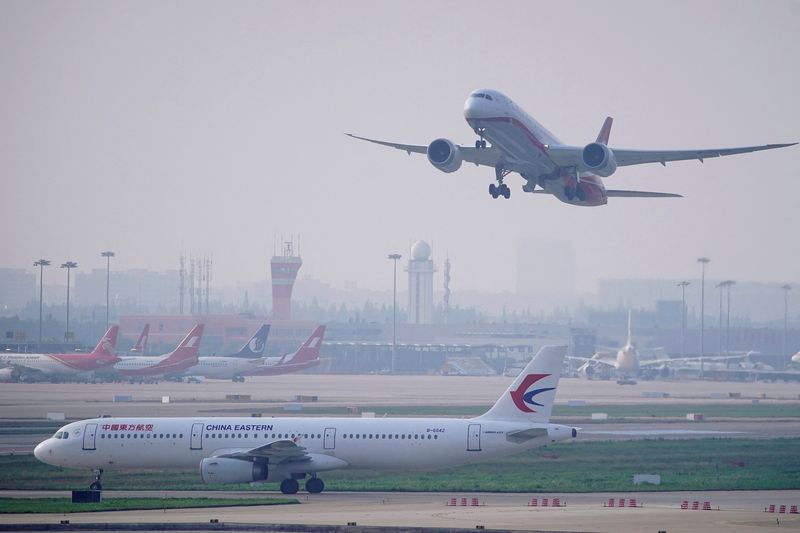BEIJING/SYDNEY (Reuters) - China's three biggest airlines posted on Tuesday a combined 28.4 billion yuan ($4.12 billion) second-quarter loss, wider than in the first quarter, due to major travel disruptions including a strict COVID-related lockdown in Shanghai.
The country's policy of localised lockdowns in response to case numbers that are small by global standards has forced carriers to frequently press the stop button on domestic travel, the main driver for revenue amid border policies that have all but grounded international travel.
Shanghai-based China Eastern Airlines (NYSE:CEA) said its net loss reached 10.9 billion yuan in the quarter, higher than the 7.8 billion yuan loss in the first quarter, and the highest among the three, mainly due to lockdowns in its home city.
China's financial hub began ordering its 25 millionresidents to stay at home in late March, resulting in the cancellations of almost all domestic flights from the city's two airports throughout April.
The airline also temporarily grounded its Boeing (NYSE:BA) Co 737-800 planes following a fatal crash in late March, the cause of which has yet to be determined. Beijing-based Air China (OTC:AIRYY) Ltd, the country's flag carrier, reported a second-quarter loss of 10.5 billion yuan, wider than a loss of 8.9 billion yuan in the first quarter when a strict travel policy was in place for the Winter Olympics. China Southern Airlines posted a second-quarter loss of 7.0 billion yuan, up from 4.5 billion yuan in the first quarter.
The second-quarter figures were based on Reuters calculations given the airlines report first quarter and half-year results but do not break out the second quarter.
Total losses of the three leading airlines in the country amounted to nearly 50 billion yuan in the first half, far exceeding a total half-year loss of 16.7 billion yuan in the same period last year.
The three state-owned carriers last week reaffirmed plans to buy a combined 292 Airbus A320neo family narrowbody jets, in deals valued at more than $37 billion at list prices.
The Boeing Co 737 MAX has still not returned to commercial service in China, more than three years after being grounded after two fatal crashes.
Jefferies analysts said domestic flights in China had recovered modestly in June, but conditions had deteriorated from late July as growing case numbers in popular travel destinations including Hainan Island, Xinjiang and Tibet led to a new round of lockdowns.
The international market remains extremely depressed, with flight numbers at less than 1% of 2019 levels, Jefferies added.
The U.S. government said on Thursday it will suspend 26 China-bound flights in response to the Chinese government's decision to suspend some flights by U.S. carriers over COVID-19 cases.

Other challenges for Chinese airlines include a weaker yuan and rising oil prices, HSBC analyst Parash Jain said in a note last month.
($1 = 6.9004 Chinese yuan renminbi)